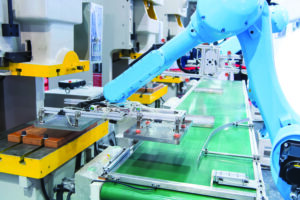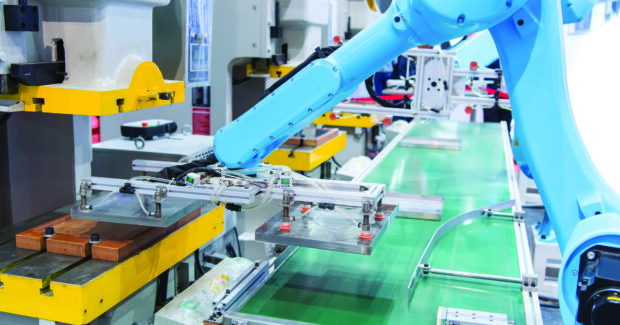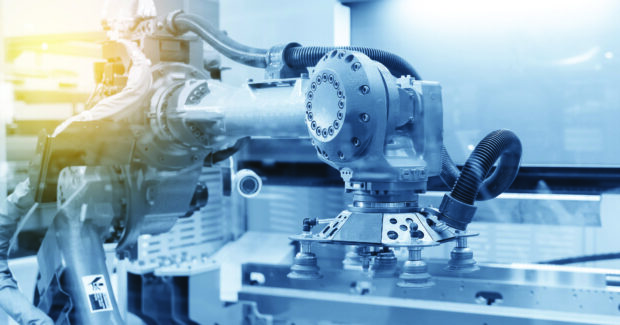Five Ways to Modernize Your Manufacturing Purchasing
When you modernize a shop’s purchasing process, buyers and customers, and more importantly — your bottom line — will celebrate the results.
Posted: July 21, 2023

Today’s manufacturing environment is all about eliminating waste and building efficiency into every area of the business — including purchasing — so you can offer a quality product at competitive prices. But if you’re still using outdated purchasing processes, it can lead to problems on the shop floor that affect workflow, customer relationships and the company’s bottom line.
For example, jobs ship late because parts or materials didn’t arrive in time. Quality problems arise when sourcing parts from unreliable vendors. Excess inventory accumulates when jobs get moved out and nobody bothers to inform purchasing to delay ordering the parts. Administrative costs increase as purchasing personnel spend inordinate amounts of time tracking down the information needed to process purchase orders.
If some or all of these issues sound familiar, it’s time to modernize your purchasing. Here are five ways to simplify and bring your purchasing process into the 21st century.
- Automated Purchasing
This will sound like old news to manufacturers that have been using auto purchasing for a while. But if you don’t have an ERP system with auto purchasing capabilities, your buyers are operating with both arms tied behind their backs. Auto purchasing doesn’t mean you can sit back and the system will do everything for you. But if your people are still pushing paper and hunting for information in dusty file cabinets, you’ll be amazed at what auto purchasing can do.
Imagine being able to:
- Consolidate all purchasing requirements into one central location
- Identify what to buy and when in minutes rather than hours (or days)
- Easily and accurately purchase raw materials to the job and inventory
- Set up auto reorder points to keep inventories at appropriate levels
- Instantly access the data to improve volume/discount buying
- Eliminate costly job/materials mismatches
- Get rid of as much paper as you want
With its ability to track all material demands in your system (up to a reasonable cutoff point), auto purchasing easily does all this and much more. It significantly reduces your total cost of purchased materials and helps your purchasing department work faster and more efficiently. If you don’t have auto purchasing, get used to playing catchup with competitors that do.
2. Purchase Order (PO) Dashboard
Having to pull information from many different locations within the system or from multiple spreadsheets in order to create a purchase order has long been a thorn in the side of purchasing personnel.
Purchase Order Dashboards remove this thorn by displaying everything buyers need to know and letting them act on the information — all from one screen.
With a PO Dashboard, buyers can see which purchase orders are coming in today and which ones didn’t show up yesterday, which ones have been confirmed by the vendor and which ones haven’t and much more. More importantly, instead of just analyzing the data (as with traditional static dashboards), buyers can also perform routine tasks — such as modifying a PO or confirming a PO receipt without having to click over to a different screen.
Granted, it only takes a few seconds to click on and open another screen. But consider this: even in small companies, most purchasers perform this small task hundreds of times a day. In larger companies that buy huge quantities of materials, this number quickly jumps into the thousands. By eliminating hundreds or thousands of clicks every day, the PO Dashboard generates exponential savings in time, efficiency and labor costs. Purchasers work faster and more effectively, and they have instant access to the data they need to prevent the dreaded “job delayed; parts not arrived” syndrome that plagues less modern purchasing departments.
- Vendor Relationship Management (VRM) Dashboard
This handy dashboard takes purchasing management to a new level by displaying detailed information by vendor — again, all on one screen.
Buyers get immediate access to everything that is happening now, in the past or in the future with a specific vendor, including all the POs due to arrive today and any that are late.
As with the PO Dashboard, the efficiency gains tend to be small but cumulative. For example, when a delivery truck arrives, purchasers typically have to sort through all open purchase orders to identify what should be on the truck — a tedious and time-consuming task. With the VRM Dashboard they can easily reference what they’re looking for on the truck and quickly identify any missing items, thereby saving time and reducing mistakes.
The VRM Dashboard also includes a history tab that displays everything previously purchased from a vendor. Instead of having to run a report to find out how much you ordered last time or whether the price went up or down, it’s all there in one screen.
Many purchasers find the Dashboard’s Vendor Performance Tab to be most useful over the long term. This screen displays a variety of data, including on-time delivery rates and quality issues, for each vendor, thereby providing valuable leverage points when negotiating new pricing or discounts.
“Making smart purchasing decisions starts with knowing all you can about each vendor,” said Rhonda Gieza, a consultant team lead for Global Shop Solutions. “What’s their lead time? Do they deliver on time? How do their prices compare to other vendors? How often do we send back bad parts? Instead of hunting here and there for this information, the VRM Dashboard brings it all together in one screen.”
- Purchase Order Action Required
Picture the following scenario: a purchase order is scheduled to be sent out based on the due date for the job. Before it goes out, someone changes the date in the system but forgets to notify purchasing. So, the PO goes out as originally planned, the materials arrive, and they end up sitting unused in inventory (often for months) until the new due date arrives. Or worse, a job gets moved up, purchasing never hears about it, and the job ships late because the parts didn’t arrive in time.
Both scenarios can be easily avoided with Purchase Order Action Required, a feature that compares purchase orders in the ERP system with current demand to identify date or quantity mismatches. Purchasers simply access the screen, review the mismatches, and make appropriate decisions to avoid unnecessary purchases and/or ensure the materials arrive on time for the job.
An automated messaging feature that lets people notify others of mismatches that require prompt action. “Automated messaging can be set up so that it only sends emails based on certain criteria,” said Langley Melendres, a senior consultant for Global Shop Solutions. “For example, you can set it to send an email only when the quantity goes up or down by 5% or the due date changes by more than a week. This prevents people from getting bombarded with emails about PO mismatches that have little impact on the schedule or cost of the job.”
- Approved Vendor
This feature saves time and can prevent bad purchasing decisions by allowing you to set up approved vendor status in advance.
Most purchasers have a “go-to” vendor for every part or material they buy because they know they can trust that vendor for quality products, good pricing and dependable on-time delivery. But suppose the go-to vendor can’t meet your due date? Or their prices suddenly shoot up? Needing parts yesterday isn’t the best time to start researching vendor capabilities.
The Approved Vendor feature comes to the rescue by displaying a list of “just-in-case” vendors that have already been approved. Instead of having to research every vendor in the system to compare pricing, delivery, quality, etc., the purchaser knows that any vendor with the approved designation is good to go.
Even approved vendors need to be re-evaluated from time to time. With the Approved Vendor feature, purchasers are more apt to conduct the evaluations in advance, knowing it will save them time and effort in the long run.
Modern is as Modern Does
Keep in mind that every part of an ERP system is only as good as the data that gets fed into it. When the data that gets fed to purchasing isn’t accurate, it can wreak havoc on the entire purchasing process. So, make sure lead times in inventory are correct. Set realistic reorder points. Apprise purchasing of any order quantity limits. And go electronic wherever possible. Send purchase orders by email rather than fax or mail. Stop paying with paper checks and switch to credit card or ACH payments. Constantly look for ways to eliminate manual spreadsheets, and discipline yourself to do the little things that lead to big increases in efficiency over time. When you modernize your purchasing process, your buyers, your customers, and your bottom line will applaud the results.
Subscribe to learn the latest in manufacturing.






